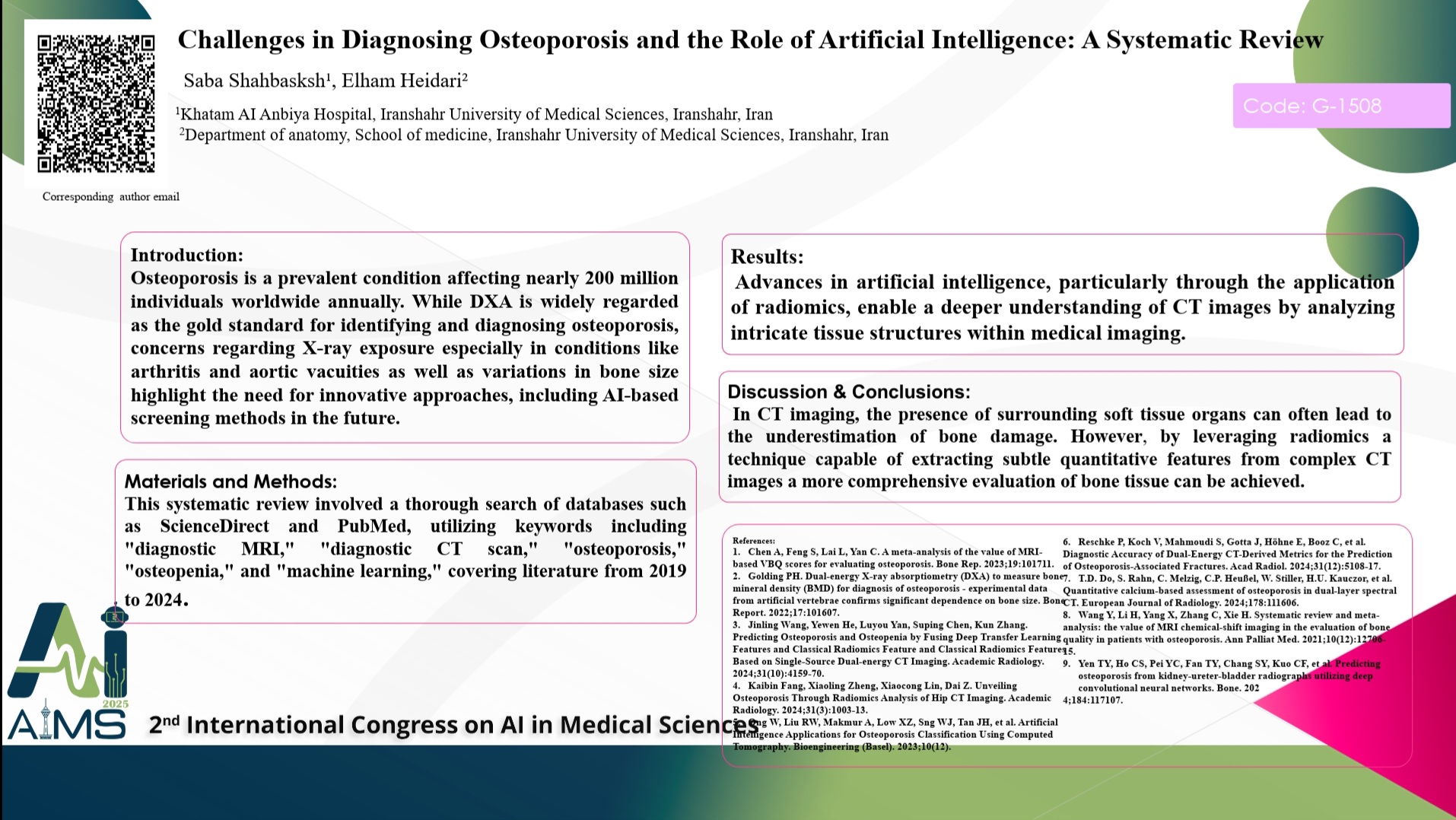Challenges in Diagnosing Osteoporosis and the Role of Artificial Intelligence: A Systematic Review
Code: G-1508
Authors: Saba Shahbakhsh * ℗, الهام حيدري
Schedule: Not Scheduled!
Tag: Clinical Decision Support System
Download: Download Poster
Abstract:
Abstract
Background and aims: Osteoporosis is a prevalent condition affecting nearly 200 million individuals worldwide annually, with approximately 4% of this population suffering fractures related to osteoporosis before their diagnosis. Conventional imaging methods for assessing bone quality, such as DXA (Dual Energy X-ray Absorption), CT scans and QCT (Quantitative Computed Tomography), remain the standard approaches. While DXA is widely regarded as the gold standard for identifying and diagnosing osteoporosis, concerns regarding X-ray exposure especially in conditions like arthritis and aortic vacuities as well as variations in bone size highlight the need for innovative approaches, including AI-based screening methods in the future. Method: This systematic review involved a thorough search of databases such as ScienceDirect and PubMed, utilizing keywords including "diagnostic MRI," "diagnostic CT scan," "osteoporosis," "osteopenia," and "machine learning," covering literature from 2019 to 2024. Approximately 4,000 articles were identified. After an initial review and the elimination of duplicates and less relevant studies, 35 articles were retained. A comprehensive review of the full texts led to the selection of 9 articles for final analysis. Results: Given the strong correlation of osteoporosis with age and gender, QCT imaging demonstrates greater sensitivity than DXA in measuring bone mineral density; however, its clinical accessibility is somewhat limited. Advances in artificial intelligence, particularly through the application of radiomics, enable a deeper understanding of CT images by analyzing intricate tissue structures within medical imaging. Conclusion: In CT imaging, the presence of surrounding soft tissue organs can often lead to the underestimation of bone damage. However, by leveraging radiomics a technique capable of extracting subtle quantitative features from complex CT images a more comprehensive evaluation of bone tissue can be achieved.
Keywords
Artificial Intelligence, Osteoporosis Diagnosis,Deeplearning Methods,CT Imaging
